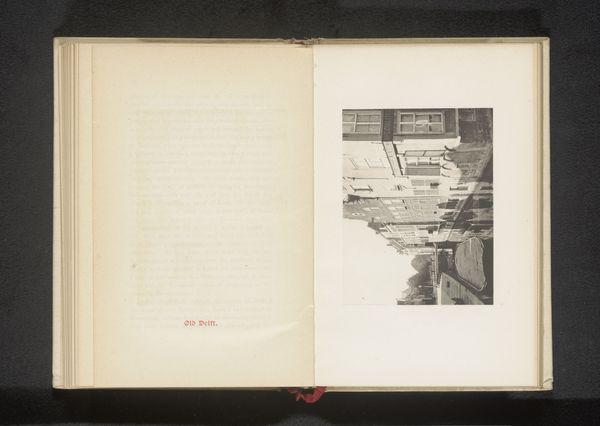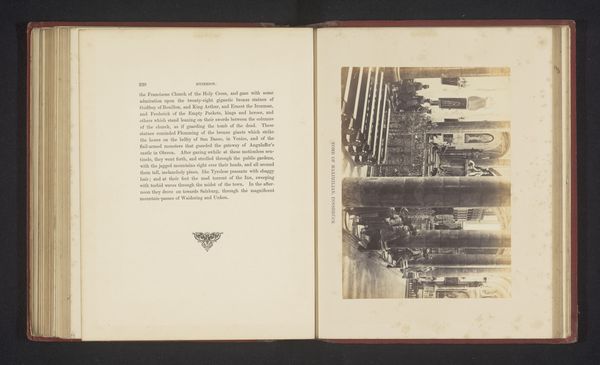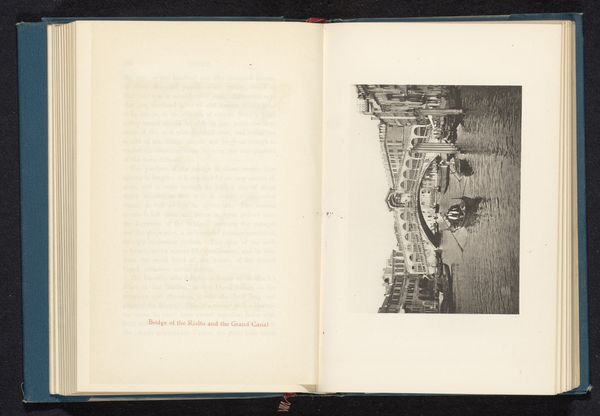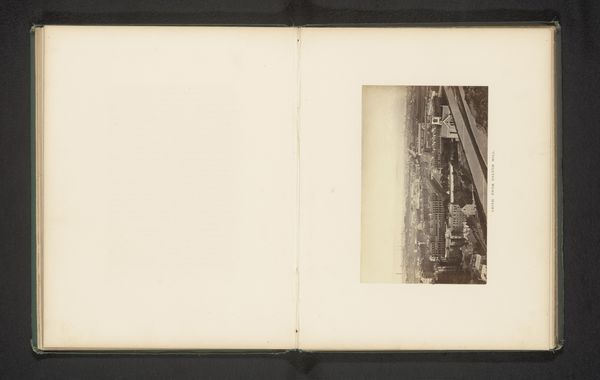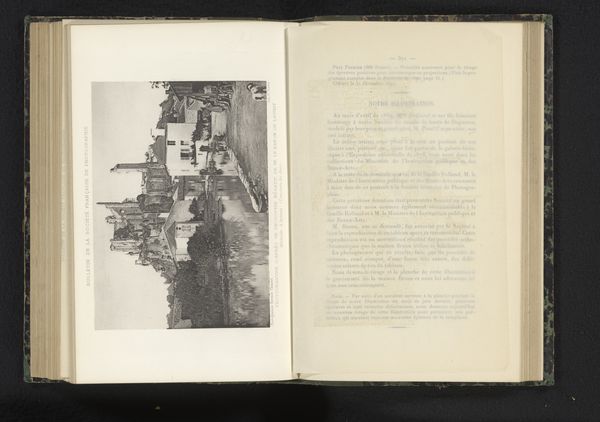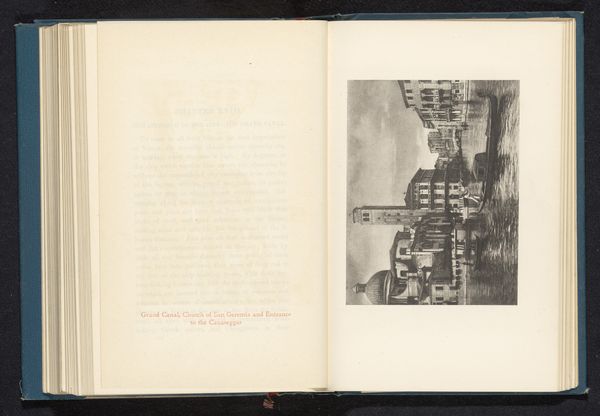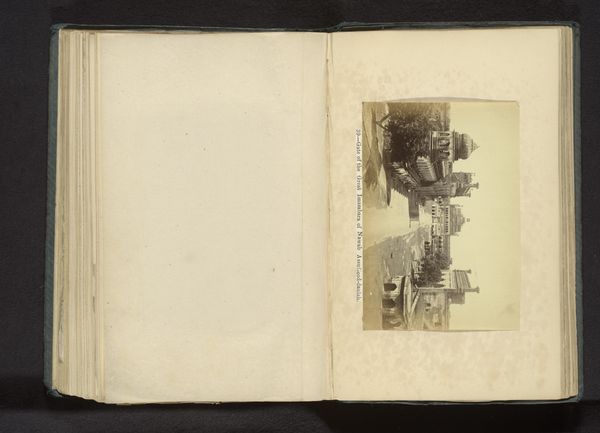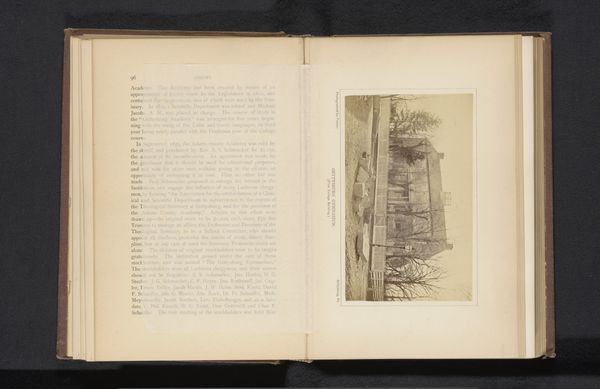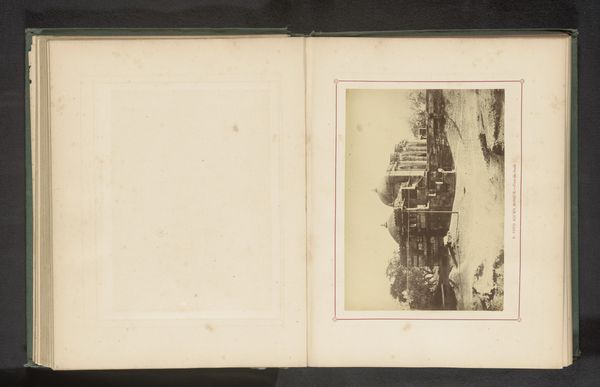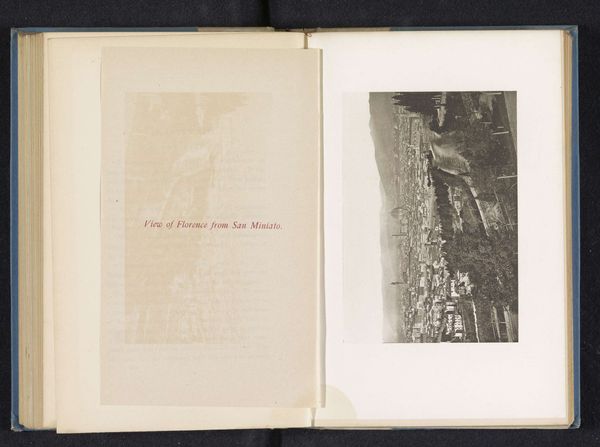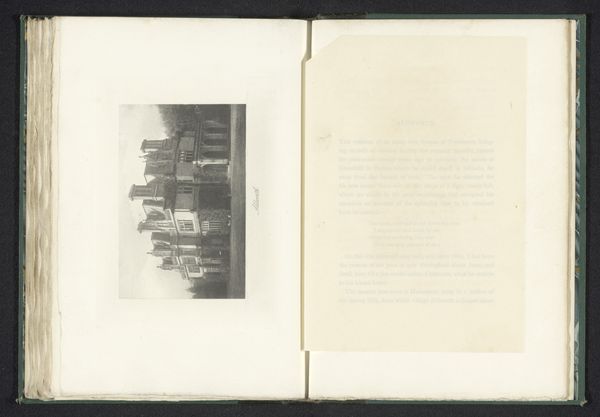
Markt op de Nieuwmarkt te Amsterdam, met op de achtergrond de Waag before 1894
0:00
0:00
print, photography, gelatin-silver-print
#
dutch-golden-age
# print
#
photography
#
gelatin-silver-print
#
cityscape
Dimensions: height 88 mm, width 125 mm
Copyright: Rijks Museum: Open Domain
Curator: Let’s take a look at this photographic print, likely a gelatin silver print, showing the Markt op de Nieuwmarkt in Amsterdam with the Waag building in the background, dating from before 1894. Editor: My first impression is of incredible texture. The stippled appearance of the crowd really contrasts with the strong geometric forms of the building behind. Curator: The print utilizes light and shadow to create depth and atmosphere. Notice the photographer's choice to capture the daily hustle. Considering this was likely a widely reproduced image, it provided a certain perspective of Amsterdam’s culture to the external world. Editor: Yes, it is capturing a bustling urban market. From a compositional standpoint, the photograph uses a linear structure with repeating geometric patterns from the architecture and market stalls. Curator: The Nieuwmarkt, historically known for trade, also faced socio-political tensions. It has been used for public executions, but then, paradoxically, became an open-air marketplace which symbolizes the complex history and its evolution. Editor: And the print medium reinforces that public aspect. Given its grayscale, the tonality of the image really captures the ambiance of an overcast market day. The silver gelatin process really reinforces its ability to capture light and texture in remarkable detail. Curator: Indeed, the silver gelatin print has served well to preserve a snapshot in history, inviting reflections on socio-cultural transitions that shifted Nieuwmarkt's image over time. Editor: Looking closely, one sees how the composition invites contemplation on these complexities and shifts. An old architecture acting as background to a newer use as an everyday fair for citizens, presented through an innovative use of materiality, makes this a fine example of representational practice.
Comments
No comments
Be the first to comment and join the conversation on the ultimate creative platform.

